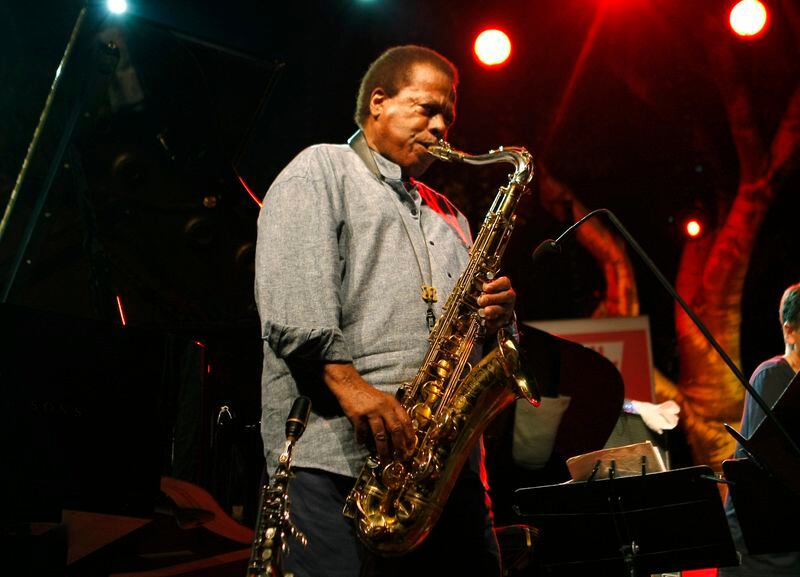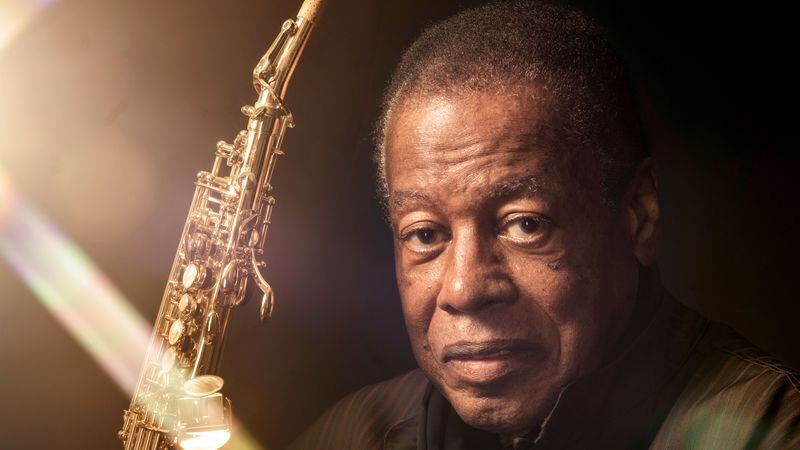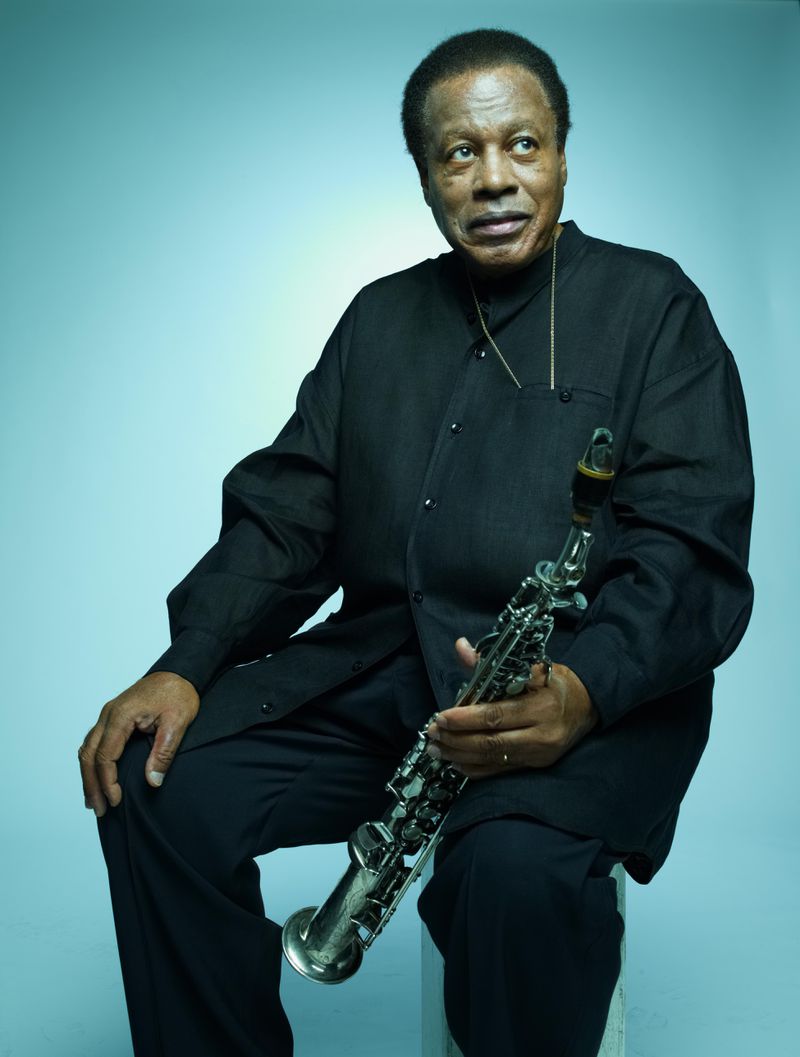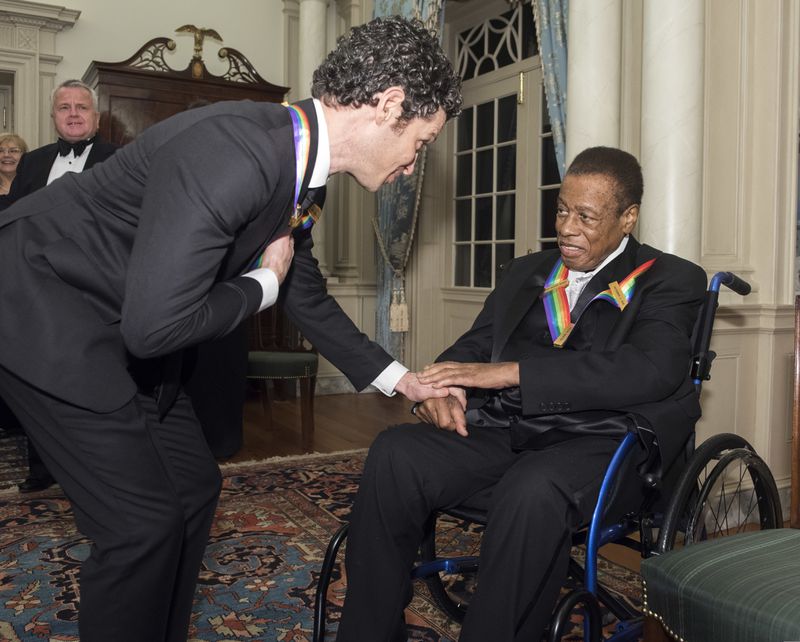Wayne Shorter, jazz musician of innovation and introspection, dies at 89


Wayne Shorter, whose captivating blend of complex harmonies and lyrical melodies in his saxophone performances and compositions made him one of the most influential jazz musicians of the last half-century, died March 2 at a hospital in Los Angeles. He was 89.
His death was confirmed by publicist Alisse Kingsley, who did not cite a cause.
Mr. Shorter’s career encompassed and, to a considerable extent, helped shape the history of jazz in the late 20th century. He was a member and musical director of Art Blakey’s Jazz Messengers, a seminal band of the hard-bop era in the late 1950s and early 1960s. He was a featured performer with the Miles Davis Quintet in groundbreaking recording sessions starting in the late 1960s that helped define jazz-rock fusion, a style he cultivated by co-founding Weather Report with pianist Joe Zawinul.
But it wasn’t until the turn of the 21st century that the self-effacing Mr. Shorter, entering his 70s, became an influential bandleader in his own right, leading a critically acclaimed acoustic quartet of pianist Danilo Perez, bassist John Patitucci and drummer Brian Blade that showcased inventive versions of such Shorter compositions as “Sanctuary,” “Footprints,” “Juju,” and “Chief Crazy Horse” as well as new originals.
Critic Greg Tate once wrote that Mr. Shorter’s signature compositions – which also included “Speak No Evil,” “Infant Eyes,” “Night Dreamer” and “Nefertiti” – “set a high bar for melodic, harmonic and emotional sophistication. His tenor saxophone playing brought more introspective nuance and intellectual complexity to the horn than anyone since Lester Young.”
Generations of musicians have included Mr. Shorter’s work in their repertoire. His shape-shifting, elliptical approach to playing and writing influenced musicians as varied as trumpeters Wynton Marsalis, a standard-bearer for traditional jazz, and Dave Douglas, a pillar of alternative or progressive jazz.
It took years for Mr. Shorter to be regarded as an original. In the late 1950s, his deep tone on the tenor saxophone and the intricate flow of his solos aroused immediate comparisons with the twin towers of tenor for that era, Sonny Rollins and John Coltrane. Both those artists, however, were among the first to recognize that Mr. Shorter was clearing a path that was strikingly different from theirs.
“Wayne never struck me as an imitator,” Rollins told author Michelle Mercer in “Footprints,” her 2004 Shorter biography. “He liked Trane and maybe me a little, but Wayne was an innovative guy himself, and that would come out in the way he put things together.”

Over time, Mr. Shorter’s tenor style developed weight and dimension while his phrasing floated, swooped, slithered and sometimes hung suspended in midair before shifting unexpectedly to a fresh idea.
The impressionism and succinctness of Mr. Shorter’s playing became stronger and more inimitable over his long career – all the way up to 2018′s “Emanon,” a magnum opus comprising three discs and a graphic novel he had co-written with Monica Sly that won Mr. Shorter his 11th Grammy Award in 2019.
Mr. Shorter’s interest in comic books dated to his adolescence in Newark, where he was born on Aug. 25, 1933. He was an avid and imaginative consumer of pop culture, imbibing the dance music his father played on the radio as well as the soundtracks he began to memorize and mimic from horror and sci-fi movies he had seen at neighborhood theaters.
A nascent talent for painting and sculpture won Mr. Shorter a scholarship to Newark’s Arts High School, where he also expanded upon his interest in film. At 14, Mr. Shorter shifted his focus to music after encountering the jazz recordings of Young, Dizzy Gillespie, Charlie Parker, Bud Powell and Thelonious Monk.
This newly awakened passion was buttressed by his longtime fascination with the dramatic structure of classical symphonies by Beethoven and Nikolai Rimsky-Korsakov. He started out playing the clarinet but soon switched to tenor saxophone.
The deeper Mr. Shorter got into jazz, the more he began to adopt callow, eccentrically hip mannerisms inspired by bebop. Poet, playwright and music critic Amiri Baraka, who grew up in Newark at the same time, recalled in a 1959 article for the short-lived magazine Jazz Review, “Introducing Wayne Shorter,” that Mr. Shorter and his older musician brother, Alan, were regarded among their peers as “the two ‘weird’ Shorter brothers.”
The Shorter boys were so proud of their reputation that Wayne Shorter painted “Mr. Weird” on his saxophone case.
He graduated from high school in 1952, then attended New York University as a music education major, subsidizing much of his tuition with band gigs. After graduating in 1956, he was drafted into the Army, where he became known for his prowess as a musician and a sharpshooter. After his discharge, he wandered the New York scene, working briefly with pianist Horace Silver in 1958 and jamming with other musicians throughout the city.
In July 1959, while playing with trumpeter Maynard Ferguson’s big band at the Newport Jazz Festival, Mr. Shorter was spotted by Lee Morgan, who then was playing trumpet with the Jazz Messengers. Morgan urged Blakey to invite Mr. Shorter to fill in for an ailing Hank Mobley as the Messengers’ tenor player. The following month, Mr. Shorter began a full-time, five-year stint with Blakey that broadened Mr. Shorter’s profile as both soloist and writer.
His most important musical affiliation began in 1964, when he joined what would become known as Davis’s “second great quintet” following the one that the protean trumpeter led in the 1950s with Coltrane. Mr. Shorter’s quirky, probing approach to music proved harmonious with Davis’s mercurial temperament, melding just as well as with the restless inventiveness of pianist Herbie Hancock, bassist Ron Carter and drummer Tony Williams.
Davis, in his 1989 memoir, wrote that he considered Mr. Shorter “the intellectual musical catalyst” for the quintet on such 1960s Columbia albums as “ESP,” “Miles Smiles” and “Sorcerer.” At the same time, Mr. Shorter enhanced his reputation with 11 albums released under his own name by the Blue Note label, among them “Night Dreamer,” “Juju,” “The All Seeing Eye,” “Speak No Evil” and “Adam’s Apple.”
He had concentrated primarily on the tenor saxophone throughout the period but began leaning more to the soprano on Davis’s 1969 album “In a Silent Way.” By the 1970s, Mr. Shorter had shifted almost entirely to the lighter-voiced instrument, which he also played on “Bitches Brew,” Davis’s hit 1970 follow-up.
Mr. Shorter left Davis’s band that year and in 1971 co-founded Weather Report with Zawinul. From the beginning, Weather Report specialized in electronically amplified blends of funk, soul, Latin and free jazz.
The high point for the group’s popularity and acclaim came with “Heavy Weather” (1977), which among other things contributed Zawinul’s rocking, swinging anthem “Birdland” to the global jazz repertory.


Mr. Shorter placed his soprano front-and-center on his 1974 album “Native Dancer,” a sequence of Brazilian tunes featuring composer and vocalist Milton Nascimento. He also began an association with Joni Mitchell with “Don Juan’s Reckless Daughter” (1977) that continued through nine more Mitchell albums. Weather Report, meanwhile, pressed ahead through personnel changes to become jazz-rock’s most resilient ensemble.
After Weather Report disbanded in 1986, Mr. Shorter’s soprano sax appeared on the albums of such diverse artists as Mitchell, Steely Dan, Don Henley, Carlos Santana, Helen Merrill and Hancock, his longtime friend.
In 1995, Mr. Shorter released “High Life,” a fusion album of string-and-brass arrangements and pulsing rhythms reminiscent of his Weather Report years. He soon began accumulating the highest honors of his profession, including designation as a Jazz Master by the National Endowment for the Arts in 1998, a Grammy lifetime achievement award in 2015 and the Kennedy Center Honors in 2018.
Mr. Shorter’s first marriage, to Teruko Nakagami, ended in divorce. His second wife, Ana Maria Patricio, and their niece Dalila were killed in 1996 along with 228 others on TWA Flight 800 soon after takeoff from New York’s John F. Kennedy International Airport. They were flying to Rome to meet Mr. Shorter. (Eleven years earlier, their daughter Iska died at 14 of a grand mal seizure.)
In 1999, Mr. Shorter married Carolina Dos Santos. Information on survivors was not immediately available.
Although regarded throughout his career as a nurturer more than a leader, Mr. Shorter said he believed from his earliest days as a player that music was an act of personal assertion and investment in one’s inner being. “Jazz for me,” he said, “is, ‘Do you have the guts to do it?’ “
